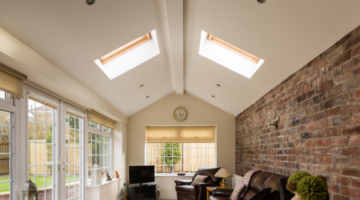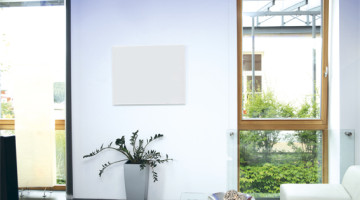
How warm should your rooms be?
With the advent of zonal heating, it is becoming possible for homeowners to heat various parts of their homes to different temperatures. It means a better level of control and savings compared to having to heat the whole house to the same temperature. Here I want to take a look at the sorts of temperature you should have in each of your ‘zones’.
The living room
The living room is something of a battleground when it comes to the thermostat. Since everyone will make use of it, often at the same time, it is the part of the house where the temperature is going to be the biggest issue. It is usually best to have the living room as a zone to itself as it is also likely to be the warmest. There is lots of discussion on how warm your rooms should be, with various temperatures thrown around by government bodies and energy companies, but the generally agreed figure for an adequately heated living space is between 18 and 21 degrees. I feel that 18 is usually plenty – make sure you get yourself some warm clothes for winter days and remember that it is not normal to expect to walk around in shorts during winter, even in the comfort of your living room.
 Bedrooms
Bedrooms
The bedroom is an area with quite wide ranging opinion on the best temperature. Some people like it warm, others find it more comfortable to sleep when cooler. If we take a look at some of the studies carried out on temperature and sleeping, there tend to be a few benefits to having a cooler room, somewhere in the low 60s Fahrenheit (about 17C). What are they? Well a study has found that sleeping in a cooler room tends to improve sleep, and prevents you waking up as much in the night. Another found that sleeping in a cooler room improved metabolism and helped people to lose weight. Of course, they do emphasise that you can be too cold… If you are shivering or just generally uncomfortable with the temperature, then you aren’t going to sleep very well, so there is a balance to strike.
How warm should I heat the kitchen?
This really depends on the type of kitchen you have. If you have a kitchen / diner, then it is going to need some heating. If it is a kitchen only, where you are only likely to be in there when the oven is on, then you can probably get away with not heating, or having an undersized radiator. The kitchen is often an area that is tight for wall space, so you don’t want to have unnecessary things mounted on the walls unless you have to.
 Bathrooms
Bathrooms
The bathroom is one of those rooms again where you (hopefully) won’t be spending that long in, so it does seem a bit of a waste to be heating it all day for no reason. Having said that, a cold bathroom is going to have a problem with condensation from showers and baths, as cold air creates much more condensation than warm air. Perhaps the best solution is to have some level of constant heating in the room, with a high energy radiant heater – like infrared, as backup to heat you almost instantly when you need to be in the room. Radiant heating has the added advantage of reducing condensation on surfaces, combating mould.
For the bathroom it is therefore more about how and when you heat, than the temperature you heat up to.
Think we missed something? Do you have a different opinion?
Comment below to get your voice heard…












A very good question, i know hubby and i often “differ” in our onions here. Personally i think 18 degrees is more than enough for the living room but he seems to think he’s living in an igloo and wants the heating much higher. Though i think part of the problem is we’ve yet to renovate that room, and it’s still using the old cast iron radiators that could probably do with an upgrade, and most certainly a good clean out. At least next time hubby complains i can show him your answer haha, thank you.